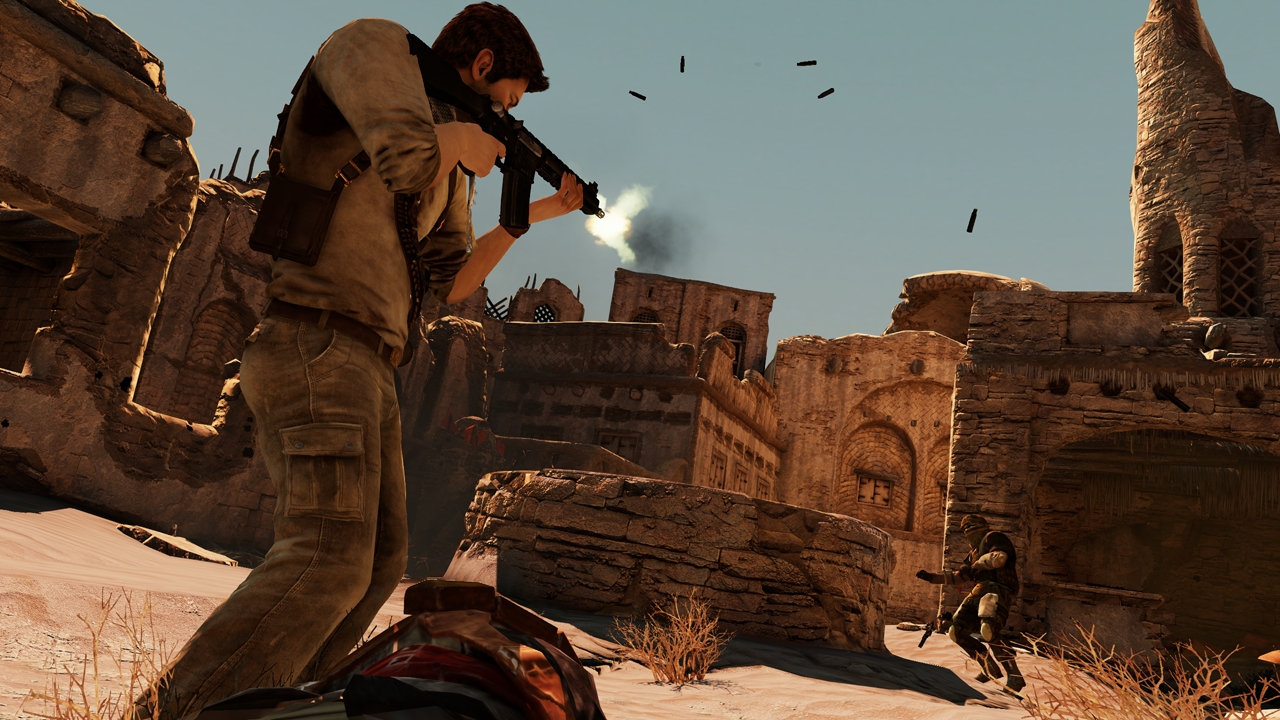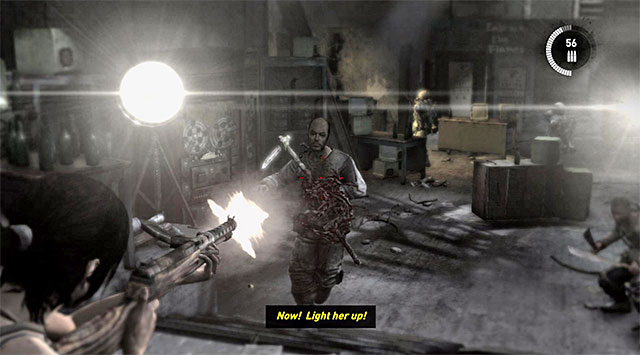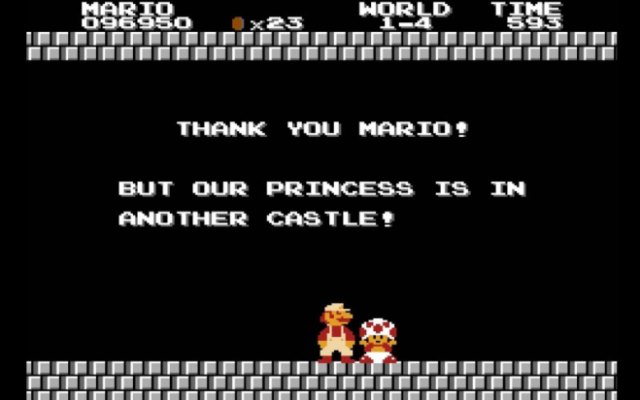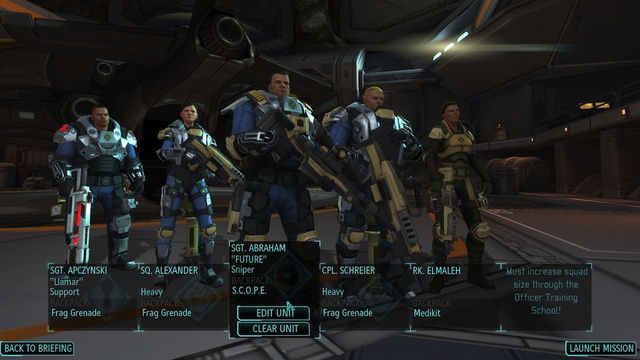I sometimes get the feeling that we are on the verge of breaking into new kinds of narrative structures, specifically created for games. For a long time, we’ve borrowed literary, theatrical or cinematic structures, copying their story experiences and ways of progression. It’s not uncommon to find a game story script that looks exactly like a movie script. But more and more games seem to pursue narrative structures that create innovative story experiences that work best in games. As you can read elsewhere on my website, I’m a proponent of innovation in story creation, which is why I want to shed my views on this phenomenon.
Is The Order 1866 really a game or a movie in disguise?
The ludonarrative dissonance
Allow me to introduce something called the ludonarrative dissonance. This is the observation that most games are either aimed at gameplay (the field of ludology), or at telling a story (the field of narratology), while games that try to do both often feel disjointed. I like to use Crystal Dynamics’ Tomb Raider (2013) to illustrate this.
The story attempts to convince us that Lara and her friends are stranded on a harsh island, where a savage tribe of shipwreck survivors live and hunt them. But the gameplay has Lara fight hordes of these hostile tribesmen, leaving the impression that the island is inhabited by the population of a small country, rather than a few dozen survivors. In addition, the story makes a big deal about Lara’s first kill, and tries to show the emotional toll it takes on her mental constitution. Cue the next scene, where Lara mows down wave after wave of nameless goons and merrily continues her way.
It seems that these kind of ‘cinematic’ experiences are most affected by this dissonance. Ubisoft’s Assassin’s Creed-series suffers from the same: the story tells us it’s wrong to kill innocents, and the game penalises the player if he kills civilians. But the player is allowed to cold-bloodedly murder scores of guards just doing their job, even though every one of those guards possibly has a family.
“I’m confused… Are you sure I’m supposed to be the good guy?”
Gameplay versus Story
Then there are the Super Mario games, which serve as our example for gameplay over story. Nintendo continues to use the same excuse to send Mario & Co on their way: Princess Peach is kidnapped by Bowser and Mario has to save her. The game offers no personal development of any characters, nor exposes what prompts Bowser to abduct the Princess over and over again. The story is redundant, and although this may lead to some disagreement in respect to gender representation and whatnot, it serves as a flimsy justification for (outstanding) gameplay.
“Can you at least a-point me in the a-general direction?”
“Please stop asking questions and just continue playing, sir.”
On the other side of the spectrum you may find a game like To the Moon or Dear Esther. Freebird Games’ To the Moon wants to tell a compelling story, and it does so very well. It shows a narrative layering that reminds me of films like Memento and Eternal Sunshine of the Spotless Mind. Yet it presents itself as a game, and this is where it’s obviously lacking. Gameplay translates here to the player being able to decide what rooms to explore and what NPC’s to talk to, but it does not influence the story whatsoever. Another part of the gameplay comes from solving simple puzzles, but this seems to be more of an afterthought than an integral portion of the game as a whole. In these cases, the gameplay serves as a thin layer to wrap a memorable story in.
Click the mouse button to advance the game?
Bridging the gap
Still, there are some instances where game and story work together perfectly. Portal comes to mind here. The story and gameplay enhance each other because they are combined. Sure, you could write a short story on GLaDOS and her history/actions, or create a puzzle game with the portal mechanics, but the reason Valve’s game works so well is because the gameplay advances the story and vice versa. But these examples are rare and far in between.
Players are generally offered traditional narrative structures through a new medium: games. Characters progress through a linear storyline. Even when a storyline branches off, you are still on a set path, with an ending that is defined by a developer team. It’s also linear in the sense that there is only one way to proceed: forward and in certain steps, or milestones, or accomplishments. The player is often unable to achieve the same effect by different means, or reverse the effects of his actions. Once a certain quest stage (or whatever you want to call it) is achieved, you can’t reverse it.
But there is another way.
Gameplay = Story Structure
I think we, as designers, should aim for a new type of game story structure. One where the game mechanics ARE the story. I’ve talked about one option before: the use of emergent narratives to create individual stories, that are actually constructed depending on the player’s preferred playstyle.
To name a different example: I love how the supply resource in Stoic Studio’s The Banner Saga conveys a story by itself. Simply by tracking how many supplies your caravan has in store, you can tell if the player prefers to include other survivors in his group; if the players chooses to spend his scarce currency to buy more supplies; or if the player is able to keep his group well-fed or not. You don’t necessarily need an NPC to point out this story through dialogue; you could point the player’s attention to the fluctuation of his supplies to make him evaluate his decisions and priorities.
Though but a small number in yellow on the UI, you can tell a lot about the player’s choices and play style by looking at his supply count
We’re also able to scatter story clues throughout a game world. Games like Dark Souls and The Talos Principle utilise this method: the player is able to discover as much or as little about the history/setting of the game as he desires. In addition to giving the player freedom to uncover the story or not, the story is conveyed through different media: The Talos Principle boasts storytelling channels in the forms of the voice of Elohim; Alexandria’s voice recordings; the QR-codes of other SOMA-units; files from the Archive terminals; and the conversations with the Milton Library Assistant, to name a few. Croteam really wanted to create a narrative experience, and not simply expose their story in a straightforward manner.
The Talos Principle: a great game! (But it helps if you love to read)
Game-specific Story Structures
My point can be summed up as the following. If you want to tell a literary tale, you write a book. If you want to present a cinematic experience, you shoot a movie. So far, games have been used to tell stories that belong in the aforementioned media. I feel we should seek story structures that are specific to the medium of games. This development calls for lots of experimentation, trial and error, and perhaps most important: evaluation. I think we can see some interesting (revolutionary) progress in this field: games like Shadow of Mordor and XCOM: Enemy Unknown tell their stories using mechanics that could only work because they employ the power of the medium.
The player decides who the definitive protagonist is and how his/her progression develops. The growing attachment to characters and the risk of losing them adds a dynamic emotional impact to the story. (picture borrowed from Kotaku)
So let’s embrace the game-specific aspects of our preferred medium and stop our attempts to imitate other media! Let’s emphasise the unique, the innovative, and the specific parts of our games and stop making movies with gameplay elements.
I’m eager to experiment with new structures that fuse game and story. Who’s with me?











I am with you, but what about books, paper, essays, articles I can read to “craft myself” a course over emergent narratives and what you explain here. Is the only actual book needed imagination and experience in gameplay. What ancient classic texts do you suggest reading, how have you come up with these ideas? I think that even cheaters and also bugs can both generate narratives and can make the first add value to the game by gamifying punishment creating positive externalities (this is an idea of mine) and the latter where user or even brave developers can “joke” about their bugs by creating stories around them until they get fixed and even after.
(example: in Hunt Showdown, an innovative FPS by crytek, in early access, at version 0.430 the game has featured some issue compared to earlier phase of this “testing phase” where a shotgun weapon use to be more deadly. As the game is set in the swamps of Louisiana (with this first map) players or bloggers, in company game writers could play over that by creating stuff that doesn’t sound like excuses, but instead makes fun failure.
I know I am talking of a very risk path, but it’s like this and with out of the box thinking like I am very comfortable in doing, and some madness that progress and new levels of entertainment and achievement in life are conquered.
Anyway… this was 2015, now maybe many things have changed with Elite Dangerous (last game) and other that have been published and massively participated by this prosumer booming society. I am writing a thesis over this. I hope to learn more.
Bye!